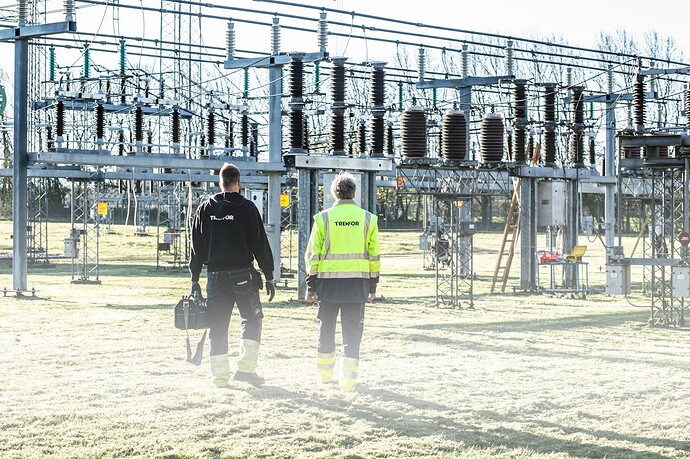As facility owners and operators increasingly prioritize adherence to the NFPA 70B Standard in electrical maintenance, the role of qualified electrical workers becomes fundamental. Simply put, skilled workers ensure not only the smooth operation of electrical systems but also uphold safety standards and regulatory compliance.
Electricity, by its nature, demands expertise to mitigate risks and optimize performance. Therefore, entrusting maintenance tasks to competent professionals not only safeguards operations but also minimizes potential liabilities. In essence, investing in qualified electrical workers isn’t just prudent; it’s essential for sustaining operational efficiency and safety.
QEMW Certification
The Qualified Electrical Equipment Maintenance Contractor and Worker Program, overseen by the International Electrical Testing Association (NETA), offers a solution by providing third-party assurance of contractors’ and workers’ expertise and experience in maintenance practices. Central to this program is the role of Qualified Electrical Equipment Maintenance Workers (QEMWs), who demonstrate their proficiency through a rigorous exam administered by NETA.
These workers specialize in performing routine maintenance services that complement the advanced electrical testing specified in ANSI/NETA Standards, carried out by NETA-Certified testing technicians at independent, third-party testing organizations accredited by NETA. This program serves to enhance safety, reliability, and compliance in electrical maintenance.
Course Outline
A Qualified Electrical Equipment Maintenance Worker (QEMW) has passed an exam, administered by NETA, verifying their knowledge and expertise in performing routine maintenance services.
1. Safety
To ensure a safe work environment, it’s vital to conduct thorough risk assessments, which involve identifying safety requirements for oneself and the crew, determining shock protection measures, assessing maintenance conditions, and understanding arc-flash boundaries.
Establishing an electrically safe work condition, including isolation and protective grounding, is essential. Additionally, it’s vital to verify the correct use, storage, and routine inspection of personal protective equipment (PPE) and safety tools for both oneself and the crew.
- Electrical Shock and Arc Flash PPE Overview
- Understanding OSHA 1910 Subpart I: Personal Protective Equipment General Requirements
Understanding incident energy analysis helps in interpreting hazard labels and recognizing factors affecting arc-flash hazards like distance, current, and time. Compliance with industry standards and regulations, including OSHA, NFPA, and ANSI/NETA standards, as well as adhering to manufacturer’s data, is key for ensuring safety.
- Important Safety Standards for the Electrical Construction Industry
- Navigating ANSI Z535.4: Your Safety Sign Roadmap
2. Maintenance Fundamentals
Understanding electrical maintenance fundamentals involves recognizing the importance of single-line diagrams and power system studies. Fundamental tests include verifying bolted connections through contact-resistance tests or torque verification, as well as assessing insulation resistance quality.
- Electrical Drawings and Schematics Overview
- Electrical Power System Studies Explained
- 4 Ways to Approach an Electrical Equipment Maintenance Program
- Fastener Torque in Electrical Systems: Understanding the Basics of Mechanical Connections
It’s essential to correctly utilize electrical test equipment for measuring current, resistance, and voltage, and to verify system parameters before and after maintenance, such as voltage, current, and temperature.
Ensuring the calibration of test equipment is essential for accurate measurements. Identifying alarms, annunciations, and indications like self-check lights, trip flags, and ground fault alarms is necessary. Performing fundamental functional tests and self-tests, as well as demonstrating troubleshooting techniques, are also key aspects of electrical maintenance proficiency.
3. Electrical Equipment
For maintenance of electrical equipment, the process typically involves visual inspections, cleaning methods adhering to industry standards, mechanical servicing procedures, and fundamental electrical tests. These tests often focus on insulation resistance, connection resistance, and evaluating corresponding values.
- The 3 Main Methods of Electrical Testing
- Cleaning Methods for Electrical Preventive Maintenance
- Insulation Resistance Test Methods, A Beginners Guide
- Field Testing Label Requirements for Electrical Equipment Maintenance
This applies to various equipment categories:
A. Power and Distribution Transformers
B. Switchgear, Switchboards, and Panelboards
C. Cables and Busways
D. Circuit Breakers
E. Switches
F. Grounding Systems
G. Ground-Fault Protection
H. Rotating Equipment
I. Motor Control Equipment
J. Batteries and Chargers
Each category requires specific attention to ensure optimal performance and safety. This includes evaluating connection resistance for grounding systems, conducting visual inspections for switches and circuit breakers, and performing battery measurements such as cell voltage and electrolyte levels.
Explore our technical library for a wealth of articles and guides covering a wide range of equipment for aspiring Qualified Electrical Equipment Maintenance Workers (QEMWs).
Technical Library: Articles and Guides
4. Examination
Examination plays a pivotal role in the qualification process for a Qualified Electrical Equipment Maintenance Worker (QEMW). These individuals demonstrate their proficiency by passing an exam administered by NETA, which validates their knowledge and expertise in conducting routine maintenance services.
TestGuy offers a series of comprehensive practice exams designed to test your knowledge and build your skills. After reading through our study material, candidates applying for QEMW certification are encouraged to browse our exams library and give them try.
Its recommended that you start with Basic/Advanced electrical theory and then work through individual topics such as Transformers, Circuit Breakers, Emergency Systems, Etc…

